Saša Karalić, IT’S SO NICE THAT WE DON’T HAVE TO TALK ABOUT POLITICS ANY MORE, Single-channel video, 6min, 2016
The exhibition ‘Scoring the Words’, an overview of common sensibilities in Asia, will be open from the 1st of September to the 20th of November at the Seosomun Main Branch of Seoul Museum of Art (SeMA). The show somehow offers a vision of the political, social and cultural events that have sprung up simultaneously throughout Asia. ‘Scoring the Words’ ponders this point, offering a glimpse of the common experiences and memories in Asia that cannot be described with words but somehow exist. What does Asia mean, when understood through the senses rather than defined as a region. We asked the curator Park Gahee.
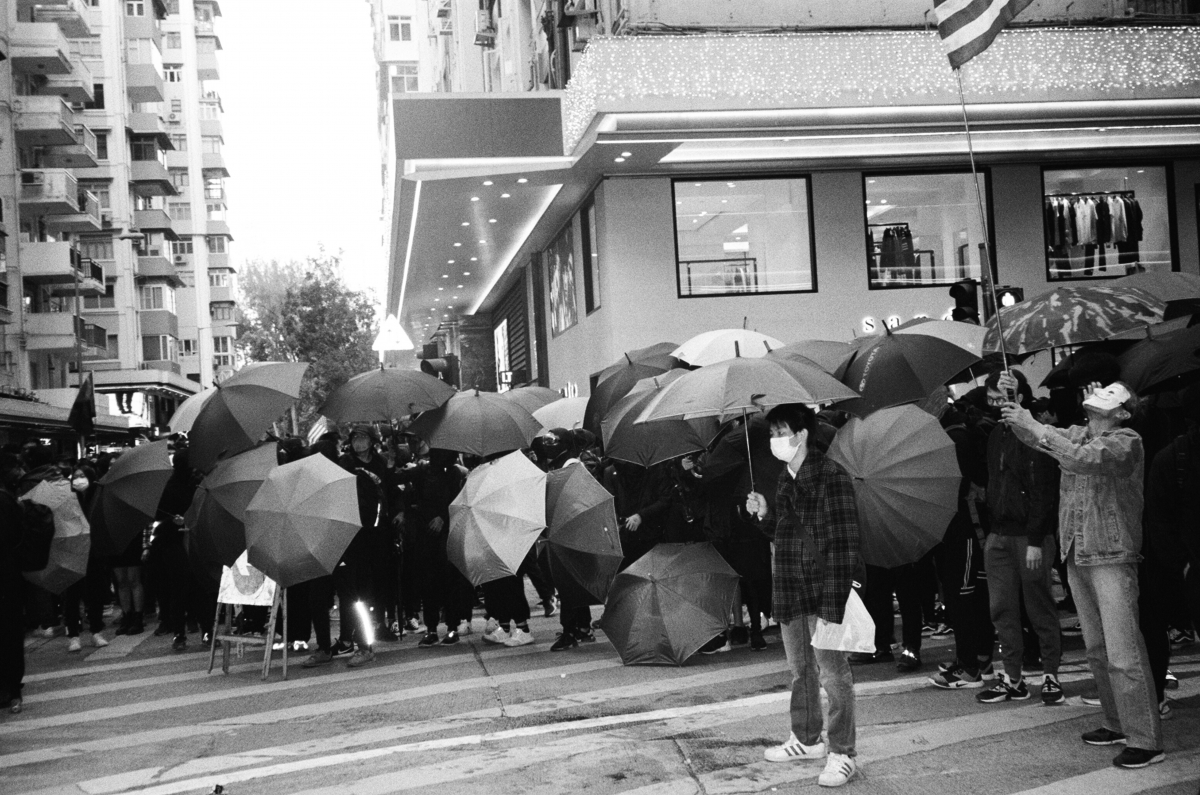
Hwang Yezoi, There Before, Digital pigment print, Wooden frame, Dimensions variable, 2022
interview Park Gahee curator, Seoul Museum of Art × Youn Yaelim
Youn Yaelim (Youn): The 2022 curatorial theme at SeMA is ‘poetry’. What genre of poetry do you focus on and how does this feature in ‘Scoring the Words’?
Park Gahee (Park): This exhibition was
interpreted through the songs and language of resistance drawn from the crowds
and the people. Poetry, which portrays the unconscious and realities of
individuals or the people, is read, spread, and sung as each poem communicates
an individual idea but a shared sentiment. The exhibition presents the
practices of creatives who respond to the present through their medium of
language. The exhibition, in which the languages of different writers
intertwine, becomes a single work of poetry.
Youn: ‘Scoring the Words’ is part of the non-western exhibition series hosted by SeMA since 2014. Following Africa, Latin America, the Middle East and Australia, this exhibition features Asia. Unlike exhibitions in the past, Asia is geographically and culturally closer to Korea. How did this framing impact the exhibition?
Park: The non-western exhibition series has consistently rejected an approach which ‘others’ the narratives and issues faced by a region. On the other hand, this present exhibition takes up residence in Asia, including Korea, and so required a fresh angle different to the former approach. First, there was consideration of the ways Asia has been read and perceived by the domestic art world until now. Many exhibitions focused on Asia have sought to prove or define its identity in opposition to the West. As a result, many exhibitions place central historical narratives at the forefront, such as colonial histories or the democratisation movement. They were much needed exhibitions in the sense that they helped to rewrite our own narratives. ‘Scoring the Words’ uses the narratives cultivated from these former exhibitions to focus on the histories and narratives remaining in contemporary Asia as well as on the group movements still being formed. Hence, it observed Asia as a place of discourse rather than as a place at the geographical, ethnical or national margins. To borrow the words of Yoon Yea-yl, a lecturer in the exhibition programme, the exhibition aims to portray a sensory or experiential aspect of contemporary as ‘a space of translation’. Here, ‘poetry’ as the theme behind the exhibition, became an important clue through which to define the sensory and experiential nature of the works on the display. The immersive quality of poetry becomes a context from which it is possible to reveal aspects of experience according to cultural, political, social group movements surrounding contemporary Asia. Through the senses and experiences activated by the exhibition, we wanted to observe and pose common sensibilities to be found in Asia. We hoped that the audience could reciprocate by questioning what the particularly Asian modes of thinking, reflection, senses and attitudes might be.
Youn: The audience would then imagine their own senses and experiences while observing the exhibition. As a curator, how would you concisely describe the common sensibilities of Asia inherent to the exhibition?
Park: While preparing the exhibition, I relished reading the book Universality and Particularity: What is Asianness? by the Chinese philosopher Sun Ge. Each line of the text hit home. I particularly remember the line discussing ‘Asian thinking which does not arise from an ethnic group’. The sense of unconsciously sharing while experiencing the same culture at the same era eventually becomes a common sensibilities. One artist also likened this to ‘slang’. I trust that a common sense, based on endemic experience definitely exists, even if we do not specifically express it. But, if we were to express it, it would probably be the sense of ‘us’. A sense of ‘interdependence’ is inherent within the expression of us. While we cannot say that this sensibility is singularly Asian, it seems that the common sensibilities found in ‘Scoring the Words’ arises from the interdependent approaches portrayed in the works. For example, the way that a sense of solidarity and caring for one another within community can be found in the video art of Tanaka Koki, who depicts Japanese society after the Great East Japan Earthquake in 2011. This also applies when thinking of the sense of love and welcoming felt from the works of the photographer Hwang Yezoi. The expressions of the two faces, with their foreheads touching, or the photos featuring people who have gathered at demonstration sites to cry out for democracy―these all portray a ‘friendly’ interconnected world.
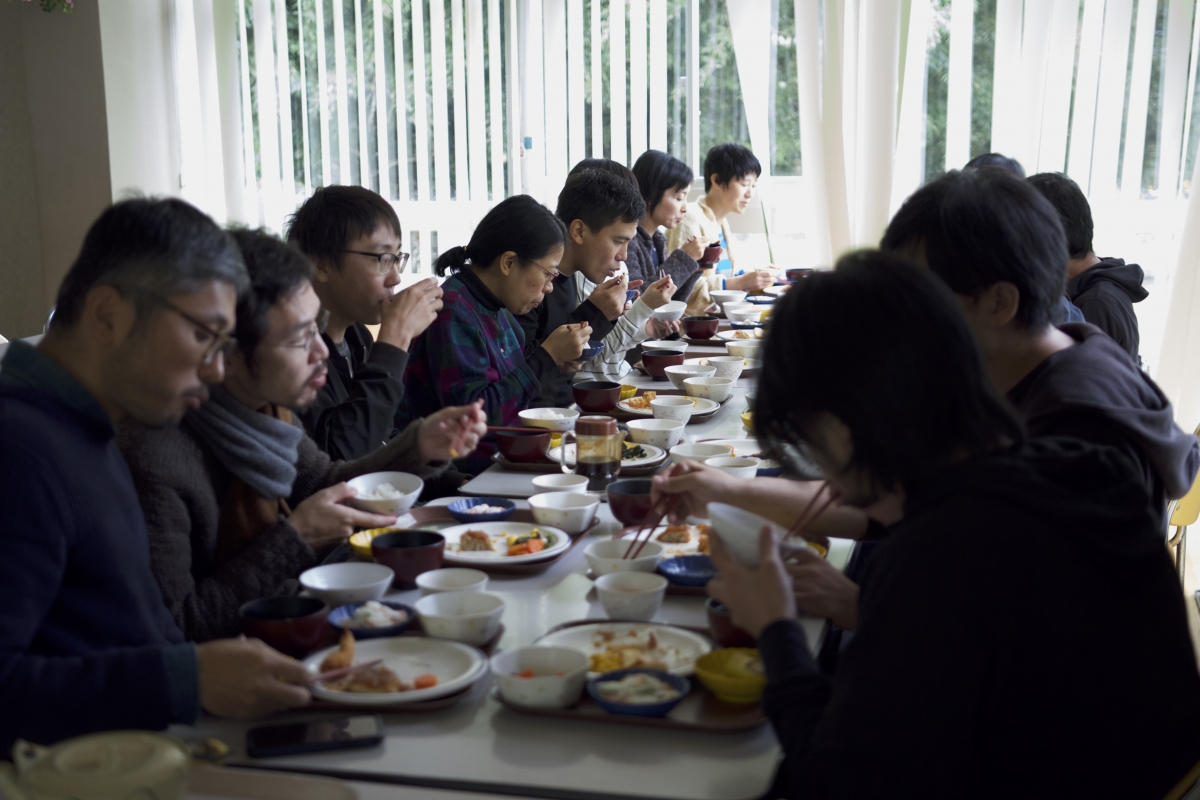
Tanaka Koki, Provisional Studies: Workshop #4 Possibilities for being together. Their configuration., Video documentation, 241min, 2015 - 2016
Youn: As a cooperating curator at the Busan Biennale 2018, you worked on selecting Asian artists. This coincides with this exhibition in the sense that you were communicating with artists based in Asia. How might you say your perspective has changed from 2018 to today, as curator of both exhibitions?
Park: My interest in Asia started to be
more specific even before that, in 2016. Things were set in motion after I
participated in the residency programme r:ead, hosting artists and curators
from the East Asian region. Thereafter, I had the opportunity to visit many
countries in Asia, and I researched artists and exhibitions while staying in
Vietnam, Taiwan, Singapore, and so on. Also, that moment itself was a time when
curators like Park Changyeong, Kim Hyeonjin were featured in major exhibitions
about Asia. It was a time in which I could think about Asia a lot, and I was
also able to study a lot. Based on such experience, I worked on appointing
certain Asian artists as part of the theme of the Busan Biennale. At the time,
I considered which works might best match the broad theme of ‘borders’ proposed
by the artistic director at the time, and I chose certain artists by
considering ‘borders’ through the local context of Korea. In this exhibition, I
moved slightly away from thematic concepts, to consider not only the narratives
of the artworks, but to also question whether the making of, or the composition
of the work could connect and touch upon each other to create a
multidimensional network. One could say that the scope of thought has expanded
from ‘narrative’ to ‘method’. Representatively, is the work of CAMP. Their
working process, which seeks to realise the shared through the diverse language
of practice, by surmounting the borders between art and non-art, the social and
the technical, creates connections and relationships in and of itself. The
featured work From Gulf to Gulf to Gulf (2013) is a joint creation made with a
ship crew on a boat heading to the Indo pacific, featuring a transnational
network.
Youn: There must be a wide array of
different Asian artists, and they must all work in different modes using
different mediums. What was the criteria you used to approach the differing
compositions and coordination of the artists in the exhibition?
Park: An important criterion for nominating
artists was to not limit them to artists ‘originating’ from Asia. I focused on
inviting artists who had worked hard to understand Asian discourse and
organized a body of artists by considering diversity in age, gender and
discourse and their interactions.
In the same context, in the exhibition leaflet or press materials, the place of origin or activity of the artists was organised according to their city rather than their country. This also signalled that regional art or regional agendas would not be discussed through the lens of nation or the national. I hoped that it would be possible to observe the activities of creators by responding to phenomena occurring at the same time across small regional units, and to discover the endemic regional context or different specificities that could be discovered through the interaction of their languages and images. The featured works and programmes were curated to interact with and without the exhibition hall. For example, the radio programme NOT A READY-MADE HISTORY by Hera Chan and Edwin Nasr, which observes the phenomena of group movements, created a new episode for this exhibition by inviting A-Melting Pot. A-Melting Pot is a team of a Korean musician and performance director, who prepared a performance and lecture for the exhibition. The radio programme discussed the role of music in contemporary demonstration sites in the Korean context and how music can be activated as a media capable of encapsulating the potential of transnational society and political practice.

CAMP, From Gulf to Gulf to Gulf, mobile phone video, 83min, 2013
Youn: While featuring works of diverse forms, such as drawing, collage, ceramic and audio-visual, it was also interesting to see how actions or events with no physical form were brought into the spectrum of featured works.
Park: The works in the exhibition hall portray the phenomena of cultural, social and political group movements that have surrounded Asia in recent years as language, images and artefacts. The works representatively reveal a certain event, yet emotively evoke an Asian sentiment. After having considered how such sensibilities might be shared as an experiential phenomenon, we assigned a symbolic space called ‘Access Points’. Access Points that becomes the momentum to create common movement, to observe particular events and the emergence of those movements, becoming a site to promote movement or partial connections for new movement. In Access Points, the audience can experience diverse programmes and events, such as performances, writing, workshops, concerts, and so on, extending their sensibilities to the exhibition hall.
Youn: The proportion of Access Points is as
large as that of the exhibited artworks, as it is the exhibition promoting
activities and events. In addition, the performances are events that are not
easily found in museums. What kind of experience did you hope that the
performances might invite and serve for an the audience?
Park: Duto Hardono and Hong Young In have both contributed performances. Coincidentally, both works deal with the theme of spontaneity. It cannot be predicted when Duto Hardono’s Variation and Improvisation for ʻIn Harmonia Progressio’ will take place, or indeed who the performer or audience will be. Once a performance starts, the performers spontaneously respond to each other’s sounds, to create a harmony. Hong Young In’s Meta-hierarchical Exercise has nine performers who gesticulate and make noises in response to a set score. The performance, which is created through an assemblage of each of the performer’s spontaneous and individual interpretations, evokes the relationship between the individual and the group which we experience in society. The experience of touch, sound and sight are presented in the exhibition hall as an event, and when the audience witnesses this together, we hoped that they would be able to feel a sense of connection through different methods and in the experience of appreciating the exhibited artworks.
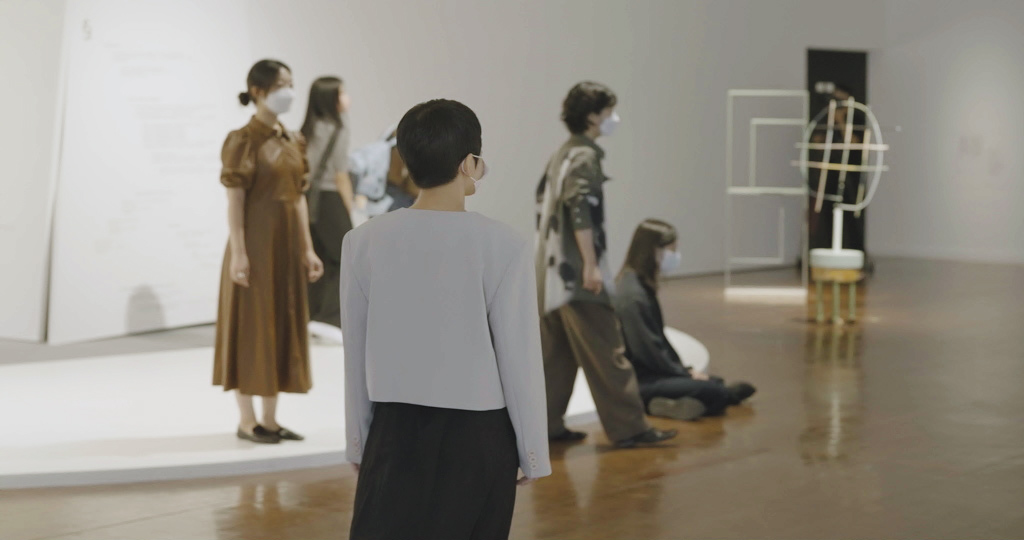
Duto Hardono, performance view of Variation & Improvisation for ʻIn Harmonia Progressio’ (2022)
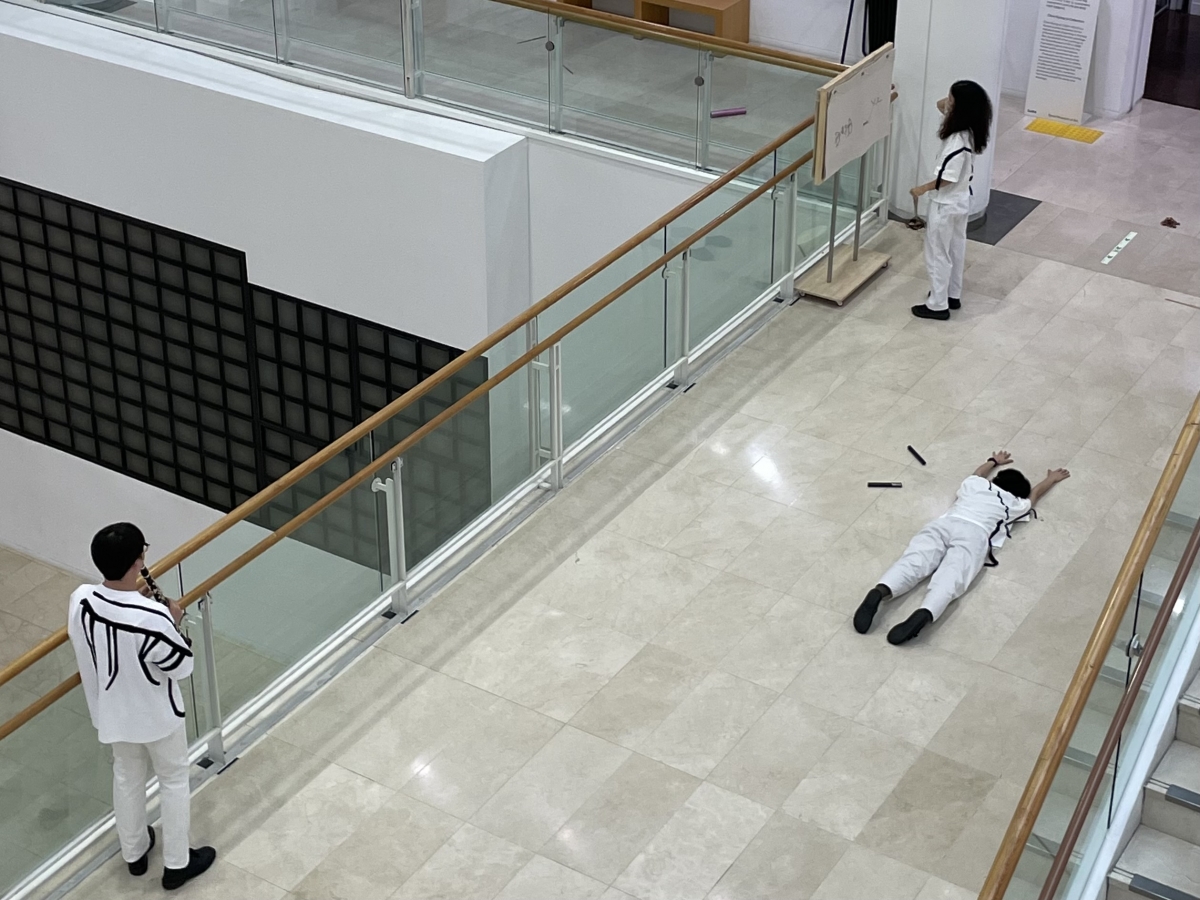
Hong Young In, performance view of Meta-hierarchical Exercise (2022) / ⓒYoun Yaelim
Youn: The joint publication is called a
‘book of poetry’ rather than an exhibition booklet. The content and composition
is also quite different from normal exhibition booklets. Selecting the content
of the book of poetry, and composing and assigning the pages must have taken a
lot of consideration.
Park: The book of poetry can be seen as an attempt to compose anew defining elements of the works, or fragments of what had been placed around the works, as something lyrical. In the same way that the exhibition becomes a poem, fragments of the language and images that comprise the works allow us to reimagine each art object, and the hope was that these sensibilities would come together to form another language and another song. The work of selecting the content for the book of poetry was to draw up, from the works, the language and images that compose the works, and to start from an extremely rough and abstract impression of these selected languages and images to progressively arrange them to unfold as specific senses. This is also why the work of Hong Young In was selected for the images of the first and last chapters. Hong Young In depicts only the simplest of lines from photographs evoking historical events or circumstances, to rewrite them in the abstract form of a ‘photo-score’, so one work from the ‘photo-score’ was chosen for the first image of the book of poetry, and the last chapter includes the original photo corresponding to this work. The intention was for the audience and the readers to understand the exhibition more actively and to gain an extended interpretation.
Youn: There are occasions when we think we
know best that which is closest, yet it ends up being something we know very
little about. There are probably not too many people who are observing the
diverse political, cultural and social phenomena of Asia from close up. Despite
this, why do you think it is important for us to discuss of our common
sensibilities?
Park: The Asia we experience in reality often emerges as an object of comparison or competition. It is an object that is close yet also one of which we do not and perhaps cannot know much. However, from the group movements that have occurred in Asia in recent times, it is possible to observe how transnationally, individuals touch, move, and connect with each other. Especially, while preparing this exhibition, I learnt about the Milk Tea Alliance. As a movement which started in Hong Kong, it passed through Taiwan, continuing to Myanmar, establishing an inspiring sense of togetherness. From such events and experiences, I was able to see the possibility of connections that transcend borders, peoples and ethnicities. I feel that the work to come is to continue to extend these connections, establishing relationships of multiple angles and layers. To borrow the words of the artist Hwang Yezoi, the task is to draw out a friendly world made up of relationships of different shapes and forms.
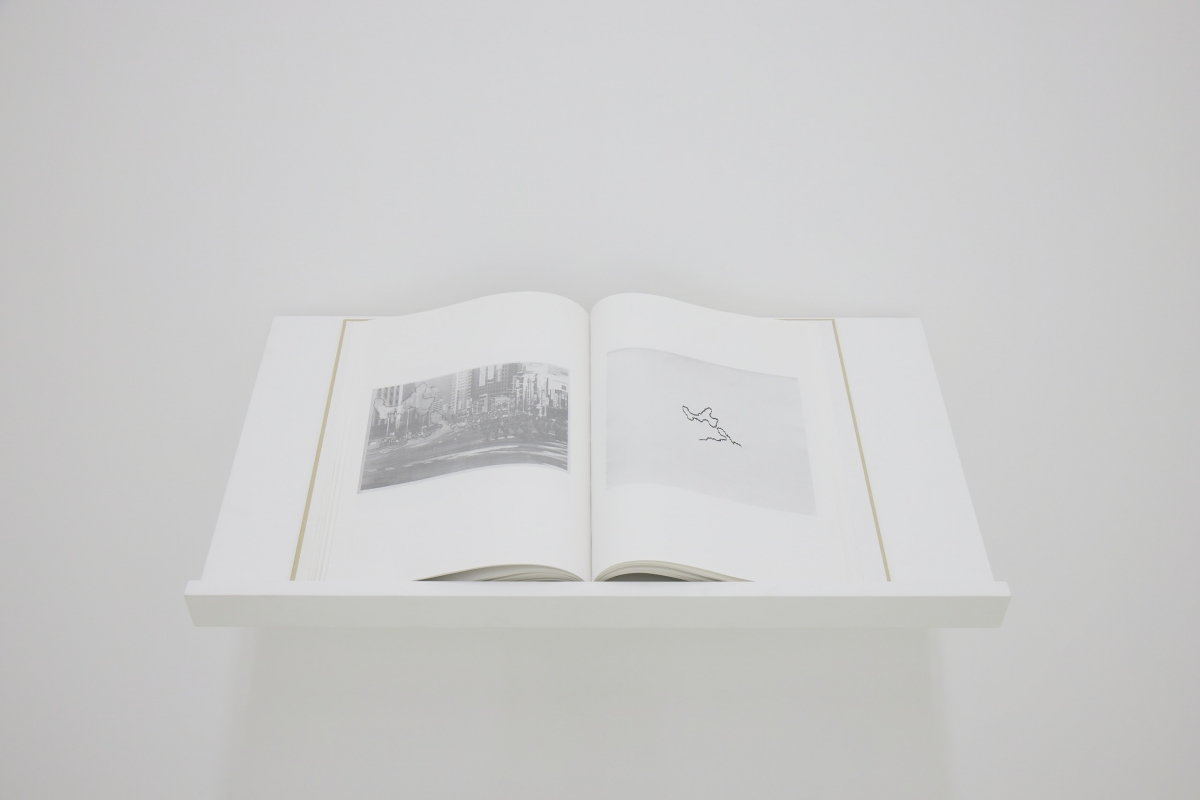
Hong Young In, Prayers Book, 37 × 30.5 × 1.6cm, 2022





